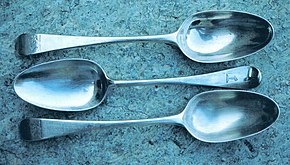A. J. VARKEY ET AL.
Open Access JWARP
talyzed Lipid Peroxidation in Liposomes and Erythrocyte
Membrane,” Lipids, Vol. 17, No. 5, 1982, pp. 331-337.
[21] J. R. Hazel and E. E. Williams, “The Role of Alterations
in Membrane Lipid Composition in Enabling Physiologi-
cal Adaptation of Organisms to Their Physical Environ-
ment,” Progress in Lipid Research, Vol. 29, No. 3, 1990,
pp. 167-227.
http://dx.doi.org/10.1016/0163-7827(90)90002-3
[22] S. V. Avery, J. L. Harwood and D. Lloyd, “Quantification
and Characterization of Phagocytosis in the Soil Amoeba
Acanthamoebacastellanii by Flow Cytometry,” Applied
and Environmental Microbiology, Vol. 61, No. 3, 1995,
pp. 1124-1132.
[23] H. Elzanowska, R. G. Wolcott, D. M. Hannum and J. K.
Hurst, “Bactericidal Properties of Hydrogen Peroxide and
Copper or Iron-Containing Complex Ions in Relation to
Leukocyte Function,” Free Radical Biology & Medicine,
Vol. 18, No. 3, 1995, pp. 437-449.
[24] A. V. Kachur, C. J. Koch and J. E. Biaglow, “Mechanism
of Copper-Catalyzed Oxidation of Glutathione,” Free Ra-
dical Research, Vol. 28, No. 3, 1998, pp. 259-269.
http://dx.doi.org/10.3109/10715769809069278
[25] D. H. Nies and N. Brown, “Two-Component Systems in
the Regulation of Heavy Metal Resistance,” In: S. Silver
and W. Walden, Eds., Metal Ions in Gene Regulation,
Chapman and Hall, London and New York, 1998, pp. 77-
103. http://dx.doi.org/10.1007/978-1-4615-5993-1_4
[26] P. Gong, O. Y. Ogra and S. Koizumi, “Inhibitory Effects
of Heavy Metals on Transcription Factor Sp1,” Industrial
Health, Vol. 38, No. 2, 2000, pp. 224-227.
http://dx.doi.org/10.2486/indhealth.38.224
[27] C. Cervantes, J. Campos-Garcia, S. Devars, F. Gutierrez-
Corona, H. Loza-Tavera, J. C. Torres-Guzman and R. Mo-
reno-Sanchez, “Interactions of Chromium with Microor-
ganisms and Plants,” FEMS Microbiology Reviews, Vol.
25, No. 3, 2001, pp. 335-347.
http://dx.doi.org/10.1111/j.1574-6976.2001.tb00581.x
[28] J. D. L. Singh, Carlisle, D. E. Pritchard and S. R. Patierno,
“Chromium-Induced Genotoxicity and Apoptosis: Rela-
tionship to Chromium Carcinogenesis,” Oncology Re-
ports, Vol. 5, No. 6, 1998, 1307-1318.
[29] Y. Suzuki, T. Sato, H. Isobe, T. Kogure and T. Murakami,
“Dehydration Processes of the Meta-Autunite Group Mi-
nerals, Meta-Autunite, Metasaléeite and Metatorbernite,”
American Mineralogist, Vol. 70, No. 8-9, 2005, pp. 1308-
1314. http://dx.doi.org/10.2138/am.2005.1568
[30] L. Nan, Y. Liu, M. Lu and K. Yang, “Study on Antibacte-
rial Mechanism of Copper-Bearing Austenitic Antibacte-
rial Stainless Steel by Atomic Force Microscopy,” Jour-
nal of Materials Science: Materials in Medicine, Vol. 19,
No. 9, 2008, pp. 3057-3062.
http://dx.doi.org/10.1007/s10856-008-3444-z
[31] S. V. Avery, N. G. Howlett and S. Radice, “Copper Toxi-
city towards Saccharomyces Cerevisiae: Dependence on
Plasma Membrane Fatty Acid Composition,” Applied and
Environmental Microbiology, Vol. 62, No. 11, 1996, pp.
3960-3966.
[32] M. Mergeay, D. Nies, H. G. Schlrgrl, J. Gerits and P.
Charles, “Alcaligeneseutorophus CH34 Is a Facultative
Chemolithotroph with Plasmid-Bound Resistance to Hea-
vy Metals,” Journal of Bacteriology, Vol. 162, No. 1,
1985, pp. 328-334.
[33] Q. K. Feng, J. Wu, G. Q. Chen, F. Z. Cui, T. N. Kim and
J. O. Kim, “A Mechanistic Study of the Antibacterial Ef-
fect of Silver Ions on Escherichia coli and Staphylococ-
cus Aureus,” Journal of Biomedical Materials Research,
Vol. 52, No. 4, 2000, pp. 662-668.
[34] C. Rensing, B. Mitra and B. P. Rosen, “Insertional Inacti-
vation of dsbA Produces Sensitivity to Cadmium and
Zinc in Escherichia coli,” Journal of Bacteriology, Vol.
179, No. 8, 1997, pp. 2769-2771.
[35] A. L. Lehninger, D. L. Nelson and M. M. Cox, “Princi-
ples of Biochemistry,” 2nd Edition, New York, 1993.
[36] S. Y. Liau, D. C. Read, W. J. Pugh, J. R. Furr and A. D.
Russell, “Interaction of Silver-Nitrate with Readily Identi-
fiable Groups: Relationship to the Anti-Bacterial Action
of Silver Ions,” Letters in Applied Microbiology, Vol. 25,
No. 4, 1997, pp. 279-283.
http://dx.doi.org/10.1046/j.1472-765X.1997.00219.x
[37] F. Hussain, E. Sedlak and P. Wittung-Stafshede, “Role of
Copper in Folding and Stability of Cupredoxin-Like Cop-
per-Carrier Protein CopC,” Archives of Biochemistry and
Biophysics, Vol. 467, No. 1, 2007, pp. 58-66.
http://dx.doi.org/10.1016/j.abb.2007.08.014
[38] F. Hussain and P. Wittung-Stafshede, “Impact of Cofactor
on Stability of Bacterial (CopZ) and Human (Atox1)
Copper Chaperones,” Biochimica et Biophysica Acta, Vol.
1774, No. 10, 2007, pp. 1316-1322.
http://dx.doi.org/10.1016/j.bbapap.2007.07.020
[39] A. R. Karlstrom, B. D. Shames and R. L. Levine, “Reac-
tivity of Cysteine Residues in the Protease from Human
Immunodeficiency Virus: Identification of a Surface-Ex-
posed Region Which Affects Enzyme Function,” Archives
of Biochemistry and Biophysics, Vol. 304, No. 1, 1993, pp.
163-169. http://dx.doi.org/10.1006/abbi.1993.1334
[40] M. J. Davies, B. C. Gilbert and R. M. Haywood, “Radi-
cal-Induced Damage to Proteins: E.S.R. Spin-Trapping
Studies,” Free Radical Research, Vol. 15, No. 2, 1991, pp.
111-127. http://dx.doi.org/10.3109/10715769109049131
[41] R. T. Dean, S. P. Wolff and M. A. McElligott, “Histidine
and Proline are Important Sites of Free Radical Damage
to Proteins,” Free Radical Research, Vol. 7, No. 2, 1989,
pp. 97-103.
http://dx.doi.org/10.3109/10715768909087929
[42] R. B. Martin and Y. H. Mariam, “Metal Ions in Solution,”
Marcel Dekker, Basel, 2001.
[43] K. L. Sagripanti, M. L. Swicord and C. C. Davis, “Micro-
wave Effects on Plasmid DNA,” Radiation Research, Vol.
110, No. 2, 1987, pp. 219-231.
[44] B. H. Geierstanger, T. F. Kagawa, S. L. Chen, G. J. Quig-
ley and P. S. Ho, “Basespecific Binding of Copper (II) to
Z-DNA. The 1.3-A Single Crystal Structure of
d(m5CGUAm5CG) in the Presence of CuCl2,” The Jour-
nal of Biological Chemistry, Vol. 266, No. 30, 1991, pp.
20185-20191.
[45] E. Keyhani, F. Abdi-Oskouei, F. Attar and J. Keyhani,
“DNA Strand Breaks by Metal-Induced Oxygen Radicals

